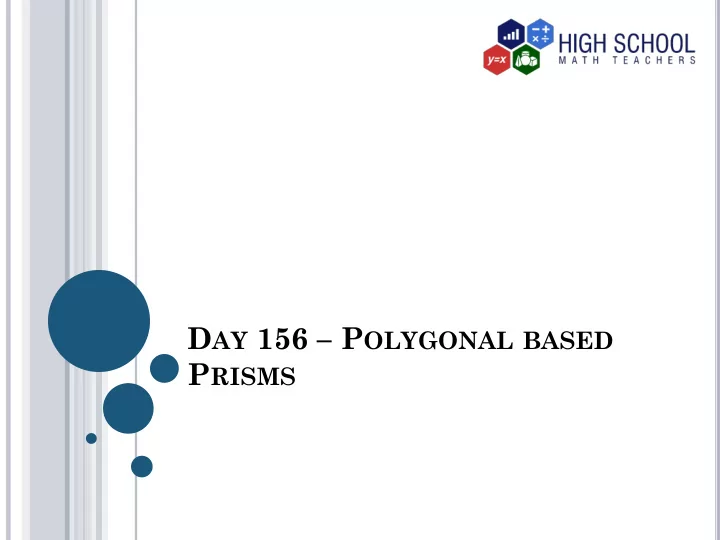

D AY 156 – P OLYGONAL BASED P RISMS
I NTRODUCTION When one cuts pawpaw across its length, it shows a roughly circular outer line with a wavy-like inside line. This is replicated along its length so long as one does not cut to towards its ends. Such face described above is called a cross section . Most 3 dimensional objects have a similar feature too. We would like to find out among such figures, what are the plane figures that is bounding it? In this lesson, we are going to identify the shapes of two-dimensional cross-sections(polygon sections) of three-dimensional objects.
V OCABULARY Cross section A view of a figure when cut at any point along its length for objects with such features. Polygon A closed figure with 3 or more sides Prism A three dimensional object with a uniform cross section
V OCABULARY Cone It is a pyramid whose base is a circle Prism It is a solid with a polygonal base which is also its cross section and rectangles along its height, or length.
Polygonal prism A prism is a three-dimensional object with a uniform prism. A prism is named based on its cross section. When a cross-section is a triangle, we call it a triangular based prism. When it is a square, we call it a square based prims which can be either a cuboid or a cube. Thus, the name, polygonal prism comes from the name of its cross-section, since the cross-section is polygons.
When the cross section is a triangle, then we have the something line one side of a triangle being dragged through a distance equal to the length of the prism. The path created is actually, a rectangle or a square depending on the distance moved. E A D ℎ B AB dragged through distance ℎ along in the direction indicated to come up with a rectangle. If the other sides are also dragged C through the same direction and distance, we get a triangular based prism below.
When the cross section is a triangle, then we have the something line one side of a triangle being dragged through a distance equal to the length of the prism. The path created is actually, a rectangle or a square depending on the distance moved. E A D ℎ B F C
We can then identify all the 2-D figures are enclosing the prism above. We have three rectangles, CFDB, BDEA, and CFEA Two triangles, CBA and FDE. We find that a triangular based prism is enclosed by two figures which are equal to its cross section and 4 rectangles equal to the number of sides of the cross- section. In summary, a polygonal based prism is enclosed with two equal polygons which are the cross section and 𝑜 which is the number of sides of the cross- section.
Example Draw and identify the number of plane figures a pentagonal prism has. Solution We draw two pentagons parallel to each other, then connect corresponding sides with straight lines. From the figure, we get 2 pentagon and 5 rectangles
HOMEWORK Identify the number of rectangles a rectangular based prism has.
A NSWERS TO HOMEWORK 6
THE END
Recommend
More recommend